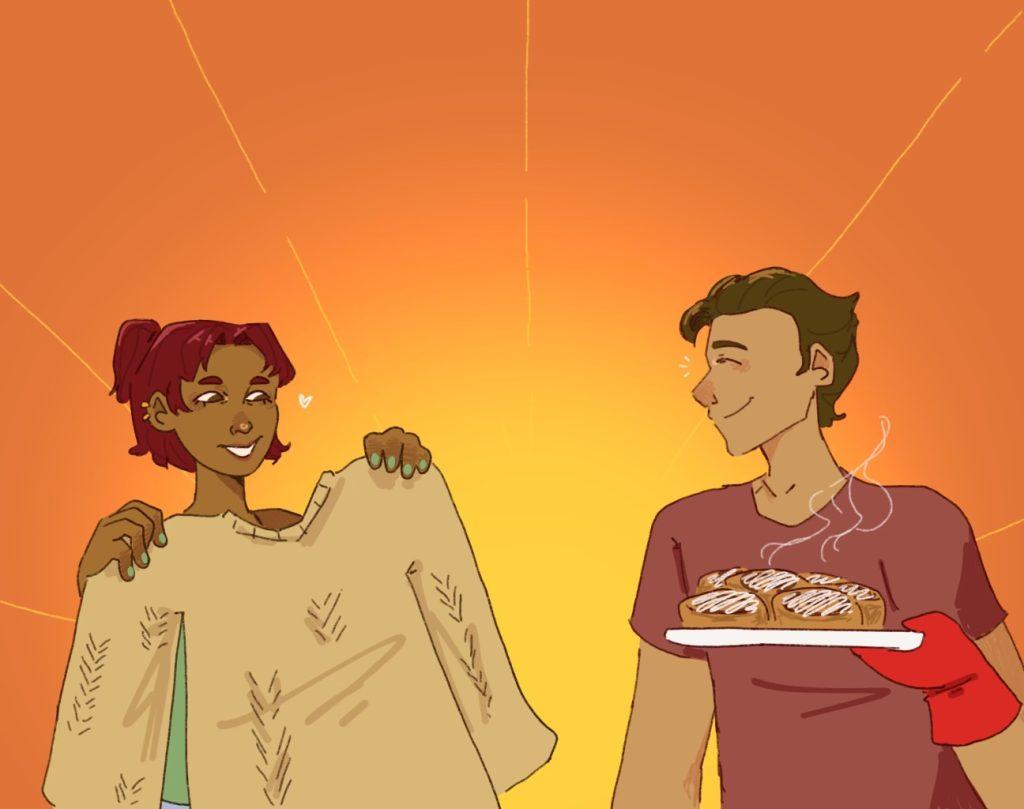Transparency Item: This is an advice column that rotates writers and is based on new topics each week. This is the opinion and perspective of the writer.
Imagine a world in which everything was the same — every person driving the same car, wearing the same clothes, eating the same food and smiling the same way.
There would be no creativity, no art, no life — at least, not in a way that celebrates people as individuals.
The picture of humans as a hive species, or of a single mind, destroys the unique identity of each individual. Creativity is the essence of what it means to be human.
There is something heartwarming about receiving a handmade gift. It’s the person who made the gift that makes the moment special — a person who is thoughtful, caring and spirit-filled.
Before machines, everything was handmade.
With the rise of the Industrial Revolution, household goods became more common and affordable, according to Encyclopedia Britannica.
While this trajectory cut down on labor and made items more accessible, it also led to the wastefulness of single-use plastic packaging and fast fashion. The constant demand for more, newer, better all the time led to the rise of consumerism and upgrade culture, according to Los Angeles Magazine.
As manufacturing and technological industries continue to expand, society may be losing appreciation for handmade goods, prioritizing cheaper prices over a commitment to quality.
At the same time, people’s desire for more personalized products has driven demand for handmade goods and processes.
“In an increasingly technologically advanced age, the demand for handmade goods has never been higher,” wrote Adam Wytz, a professor at Kellogg School of Management at Northwestern University, in the book “The Power of Human.”
Handmade gifts are unique because they reflect their maker. A handmade sweater cannot be found mass-produced in a store, and just like a home-cooked meal, it is made with a special ingredient — love.
One way I exercise my creativity is through crochet. My grandma introduced the craft to me when I was 7 years old.
Later, I continued learning through online resources like YouTube channels and craft blogs. A site I found really helpful is B.Hooked Crochet.
Every time I learned to make something new, I was filled with excitement. My own two hands created something out of what seemed to be nothing — a skein of yarn and a hook.
I shared my excitement with anyone I could get to listen. For special occasions like birthdays and holidays, I made crochet gifts for family and friends.
At the age of 9, I began to sell finished crocheted objects at community craft fairs and later created a small business selling finished hats, scarves and hair accessories.
Not only did this experience give me an opportunity to learn business skills like communicating with customers, tracking expenses and calculating sales, but I also discovered my innate gifts, talents and passions.
Every person has a unique blend of creative gifts, and creating things helps us unlock them.
Some create works of art, like paintings and sculptures, to be displayed and treasured in both homes and museum galleries like the Frederick R. Weisman Museum of Art.
Others compose meaningful music and perform plays for private and public audiences alike. Still others use mathematics to solve problems and innovate, creating architectural and engineering feats or sophisticated computer programs.
For students interested in trying new handicrafts, Pepperdine offers studio art classes. There are also many free and paid online resources like Craftsy, which offers classes taught by experts on a range of activities, including painting, baking, fiber arts and gardening.
Even now, with school, work and social obligations, I make time to create. After a long day of taking in fact after fact, bombarded with new information to learn, my brain is tired.
A tactile activity like crochet or writing helps to ground me while I process thoughts and organize ideas.
In the Christian creation story, God is undoubtedly a maker. His ability to create does not end with Himself; He gave people this ability when He created humans.
Genesis 1:26 says, “God said, ‘Let us make mankind in our image, in our likeness.’”
As people made in God’s image, humans are designed to be creators and makers, thinkers and dreamers. Let’s embrace what it means to be handmade and showcase the creativity and beautiful diversity of mankind.
___________________
Follow the Graphic on Twitter: @PeppGraphic
Email Madison Luc: madison.luc@pepperdine.edu


